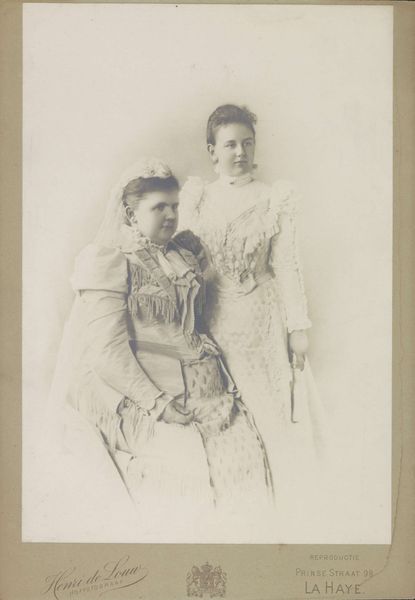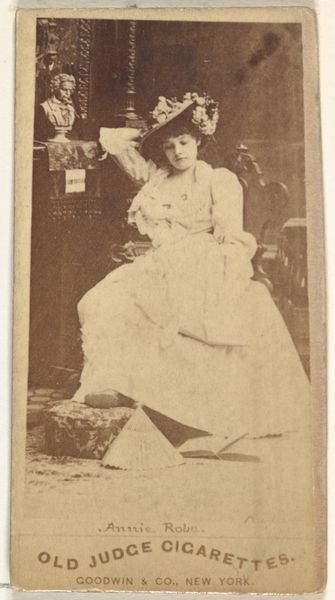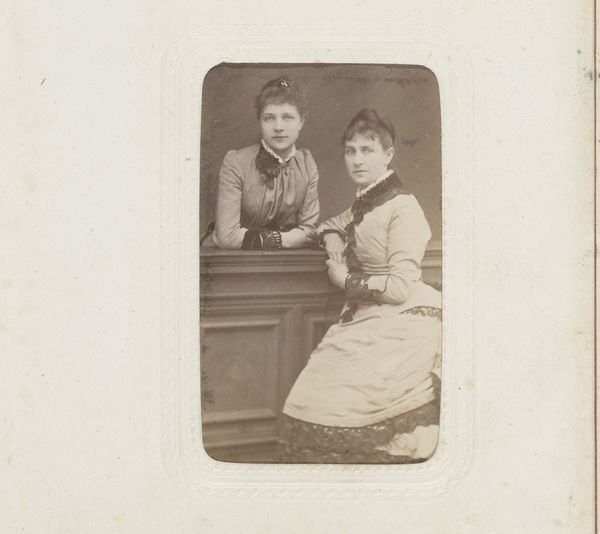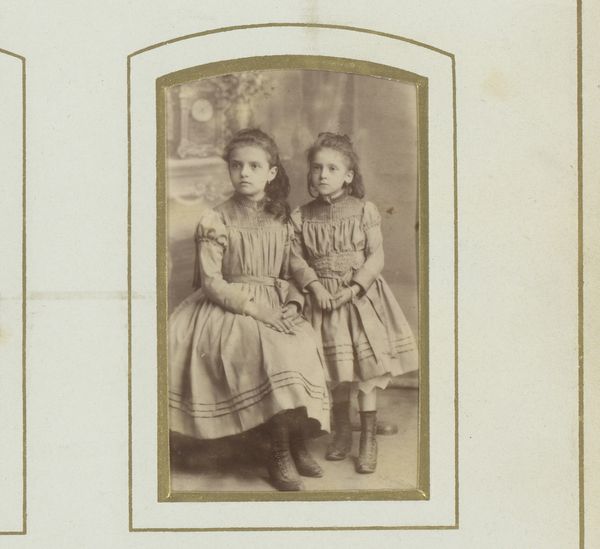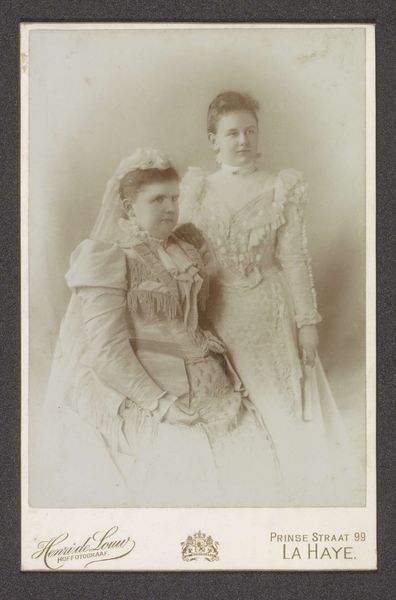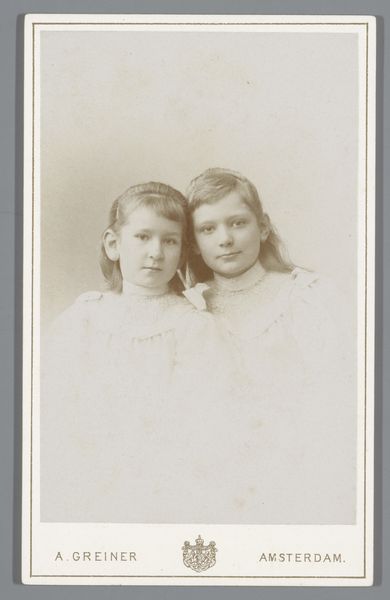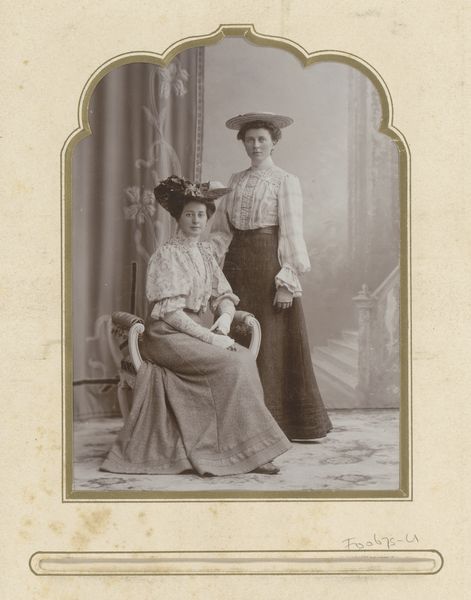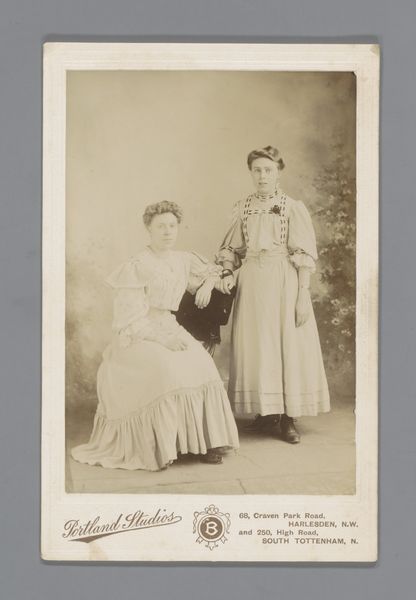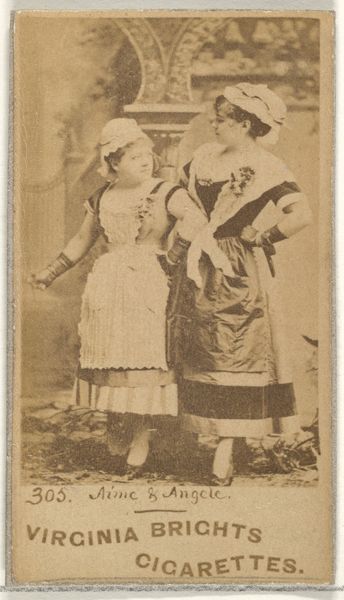
photography, gelatin-silver-print
#
portrait
#
photography
#
historical photography
#
group-portraits
#
gelatin-silver-print
#
19th century
Dimensions: height 88 mm, width 57 mm
Copyright: Rijks Museum: Open Domain
Curator: What a strikingly formal photograph. "Portret van twee meisjes in lange jurken met hoeden," or "Portrait of two girls in long dresses with hats," dates to between 1882 and 1900, and is now held here at the Rijksmuseum. It's a gelatin silver print, showcasing the elegance of the era through portraiture. Editor: Yes, and immediately what strikes me is the tonal range achievable with gelatin silver! From the plush shadows beneath their skirts, hinting at a constructed studio scene, to the almost bleached-out quality of their white dresses. It pushes you to really observe the materiality and process itself. Curator: Absolutely. Think about the social context: photographic portraits became increasingly accessible during this period. Yet, posing for a photograph remained a relatively formal affair, dictated by convention and the photographic process, impacting the self-presentation on display. Editor: Precisely. Note how the stark white garments of the sitters draw the viewer in, immediately suggesting wealth and class. I’m also fascinated by the textures captured. The weave of the large hat contrasts beautifully with the draping of the fabrics and hints at how tactile, and sensory photography can be. The attention to the surface elevates what might have been considered merely commercial portraiture. Curator: True, though that demarcation is always shifting. The proliferation of such images undoubtedly influenced and reflected contemporary ideals of beauty and social status. These types of photos document the expansion of middle-class consumer culture and new forms of visual representation. Editor: And it is really exciting when examining the physical history of the image. This piece bears the marks and wear of passing through time. A physical object whose past experiences—exposure to light, fluctuations in climate, and many different viewing experiences—contribute greatly to its present significance. Curator: Ultimately, a photograph is a complex intersection of technology, social practice, and artistic expression, a testament to how individuals wished to be seen, and a record for our contemporary examination. Editor: Exactly. Considering its historical context alongside the technical artistry reveals such a richer narrative about its past.
Comments
No comments
Be the first to comment and join the conversation on the ultimate creative platform.
